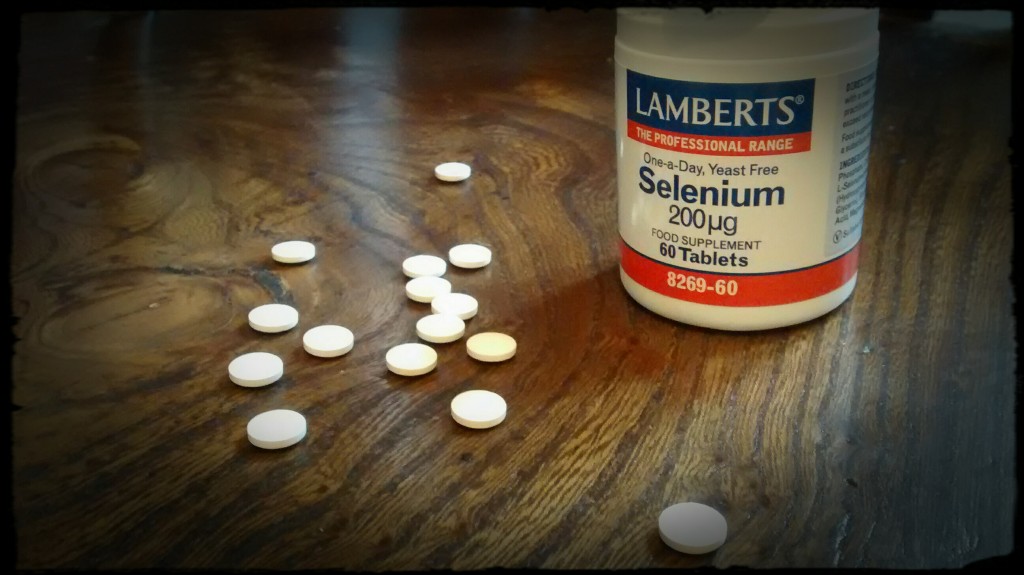
Low selenium soils produce low selenium plants. Low selenium plants produce low selenium diets. Low selenium diets cause low selenium people.
Selenium intakes in New Zealand are considered low compared to other nations. Low selenium soils produce low selenium crops and this is therefore reflected in low selenium intakes in New Zealanders. Because long term low selenium status is thought to increase rates of oxidative stress, populations without access to selenium rich foods may show increased rates of certain disease. Nutritionally, the low selenium intakes in New Zealand are interesting because it provides a population to study the effects of low selenium diets. For example, it has been shown that the plasma glutathione peroxidase activity is low in the New Zealand population as a result of the low selenium intakes. Supplementation of New Zealanders with selenium increases glutathione activity of plasma, which has lead some to suggest that the average 30 μg per day intake is too low. Indeed this levels is below the recommended intake of the United States and the United kingdom, at 55 μg per day and 75 μg per day, respectively.
Because supplements are beneficial at increasing plasma selenium and plasma glutathione peroxidase activity, fortification has been suggested as a solution to the low selenium intakes in New Zealand and other regions of low selenium soil. Studies have investigated the effects of such a supplementation programme on the glutathione peroxidase activity of subjects and generally reported positive results. When four New Zealand women were fed selenium fortified bread containing a daily dose of 200 μg per day selenium, there was a significant increase in plasma glutathione peroxidase activity1. When the high selenium bread was withdrawn from the diet of the subjects, the plasma levels of glutathione peroxidase fell back towards baseline, but did remain elevated somewhat. The glutathione peroxidase activity in whole blood, platelets, erythrocytes and plasma increased by 21-36 %, 56-172 %, 24-43% and 25-119 % respectively, and showed good correlations with plasma selenium levels.
In a different study by the same research group, the selenium intakes of New Zealand residents were supplemented with selenium bread, and the effects on urinary excretion of selenium measured2. Before supplementation, the plasma clearances of the New Zealanders were compared to those of subjects living on higher selenium diets in the United States. The data showed that the renal clearance of selenium was much lower (0.1 to 0.2 mL per min) in the subjects from New Zealand compared to the subjects from the United States (0.2 to 0.3 mL per min). In addition the plasma levels of selenium were lower in the New Zealand subjects (50-70 ng per mL) compared to those from the United Stated (120-140 ng per mL). Supplementation with high selenium bread containing between 100 and 200 μg per day selenium caused increases in plasma levels of selenium to between 120 and 175 ng per mL and increases in urinary excretion to between 0.4 and 0.7 mL per min selenium.
The improved selenium plasma levels and increased urinary excretion rates remained elevated when supplements ceased before returning to baseline after a few days. However when subjects from the United States had a similar reduction in selenium intake, their urinary excretion rates remained elevated. The low selenium intakes in New Zealand individuals may therefore cause compensatory sparing of selenium which causes the urinary excretion to be drastically reduced during times of depletion. From the data the authors calculated that the kidney of a New Zealand subject would have seen around 50 mg per day selenium, but only excreted around 15 μg. In contrast the kidney of a subject from the United states would have seen around 150 mg per day selenium, and excreted around 120 μg. These rates of excretion are low, which may relate to the reabsorption of organically bound selenium from the proximal tubules along with other amino acids. Inorganic selenium may be less likely to be reabsorbed than protein bound selenium.
